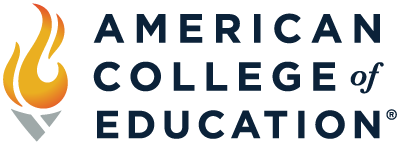
When it comes to education, collaboration is the holy grail. Just like one basketball player cannot win the championship game alone (LeBron James has proven that), even the best teacher cannot ensure the success of his or her students without a team of invested stakeholders contributing their ideas. This is why all schools need a professional learning community or PLC.
A professional learning community is an inclusive membership of education stakeholders who routinely meet to collaborate on a specific school-related issue to improve educational outcomes.
How to Start Your Own Professional Learning Community
Starting a PLC is easier than you think. I started one at my school three years ago, and I took just a few simple steps to initiate and sustain this initiative.
When I noticed a school-wide issue – low reading comprehension – I did some research. I discovered one of the biggest contributing factors to low reading comprehension was an underdeveloped vocabulary. Using deductive reasoning, I figured that if students improved their vocabularies they would improve their reading comprehensions. If I could get other fellow educators involved in an initiative that improved student vocabulary, we could make great strides toward solving this issue.
Next, I sought my principal for support. I gave a prepared pitch with the problem, possible solutions, ways to overcome barriers and benchmarks for measuring success. Getting buy-in from the principal or administrator is key. She gave me a monthly leadership consultation, set aside time and space for me to conduct meetings and even gave participants a stipend.
After earning her support, I solicited all staff members for their services. They were invited to an informational meeting via email and with flyers placed in their mailboxes. There, I gave a presentation on how a Vocabulary PLC would be beneficial for our school community and I asked for their input. Out of the informational meeting, five passionate and committed teachers were ready to get to work. Thus, the Vocabulary PLC was born.
How to Set the Agenda and Manage the Process of a Teacher PLC
In our initial meeting, we shared ideas and took on specific roles. We had a facilitator, a recorder, a timekeeper and a research manager. We used Doodle.com to discover the best meeting times and create the year’s schedule. We also established norms, our vision, missions for the meetings and barometers for how we would measure progress.
During our biweekly meetings, we stuck to our agenda and the time. We analyzed student work, lesson plans and strategies, making modifications when necessary. We put tasks in Google Drive with due dates, the responsible party and a section for notes from meetings. After each meeting, we reflected collectively and individually on our roles and progress.
To keep the PLC sustainable, I sent encouraging weekly emails highlighting our success and how close we were to our goal. I always thanked my PLC for their commitment, and we highlighted a member each month in our meetings. My principal also included the Vocabulary PLC in her weekly emails and illustrated how our collaboration was responsible for the improvement of standardized test scores and expanded vocabulary usage in student writing. Each quarter, we completed surveys of next steps and stated what we felt we needed to improve our PLC.
In addition, each quarter, we would invite staff to our meeting to pique more interest in the PLC and receive any one-time suggestions. Our school’s dean attended and, though she could not commit to meetings, she volunteered to do a weekly targeted vocabulary word in her daily morning announcements. My assistant principal even allowed students to post words on sentence strips throughout the school building for consistent exposure.
How to Track (and Celebrate!) Results from Your Teacher PLC
At the end of year, our PLC analyzed final data and saw growth in assessments and teacher collaboration.
These successes were posted in charts in different areas of the school for all to see. Students and staff were impressed with what we’d accomplished. Due to the PLC’s success, collaboration grew and five more PLCs ensued: instruction, behavior management, student engagement, parent engagement and planning.
A little collaboration can go a long way and a teacher PLC is the perfect way to foster it.
Learn how to lead your own professional learning community by honing your leadership skills in American College of Education’s M.Ed. in Educational Leadership program.

